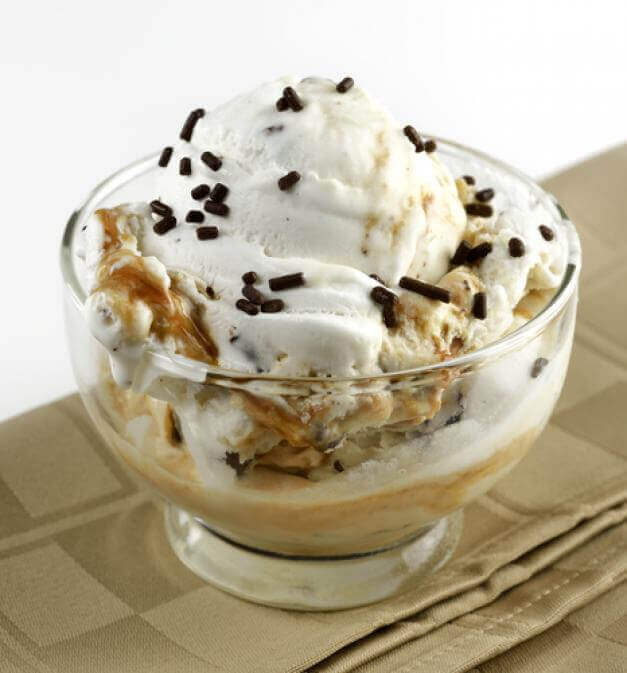Satiety vs. Satiation (Part 1)
Always hungry? Nutrition Diva explains the difference between foods that make you full and foods that keep you full.
Today, we’re going to talk about the factors that make you feel full and those that keep you full. (They are not the same thing!) This topic has obvious relevance to anyone who is trying to /health-fitness/healthy-eating/how-to-lose-weight-without-dieting or even to keep from gaining weight: Putting down your fork is easier if you feel satisfied at the end of a meal. Likewise, cutting down on /health-fitness/healthy-eating/is-snacking-good-or-bad will be easier if you’re not /health-fitness/healthy-eating/3-tips-on-how-to-eat-less-without-feeling-hungry. But these same concepts will be equally useful to anyone who is struggling to gain or maintain their weight.
The Difference Between Satiation and Satiety
First, we need to differentiate between satiation and satiety, two related but distinct factors that influence how much you eat. (Or, at the very least, they influence how much you want to eat.)
Satiation occurs during a meal. It’s that point at which you feel that you’ve had enough to eat and don’t desire any more. Satiety, on the other hand, describes your experience after a meal—how long before you start to feel hungry again. Both satiation and satiety are influenced by a number of factors. When you understand these factors, you can use them to your advantage.
What Factors Affect Satiation?
Research shows that a variety of factors—some physical and some purely psychological—influence how much food it takes to make you feel full.
Volume. Not surprisingly, foods that take up more space in your stomach tend to be more satiating. If you’re trying to lose weight, you want foods that take up a lot of space relative to the calories they contain—such as raw vegetables and broth-based soups—because these will make you feel fuller with fewer calories. If you’re struggling to keep weight on, you might want to limit these types of foods, because they can fill you up before you’ve consumed enough calories. A bowl of chicken soup and a salad might be a good choice for someone trying to limit calories. Someone who’s trying to maximize calories, on the other hand, might be better off with grilled chicken and vegetables. Here’s by Barbara Rolls at Penn State that illustrates this principle.
Time. Foods that take longer to eat can also reduce the number of calories you eat before you feel satisfied. When our stomach gets full, it sends a signal to the brain to stop eating. But this signal can take several minutes to arrive. When you’re eating very quickly, you can consume an awful lot of excess calories in the interim. And regardless of how many calories we’ve eaten, the desire to eat generally diminishes after we’ve been eating for a while. So if you’re trying to feel full on fewer calories, choose foods that require more time to eat. Go for nuts in the shell rather than shelled nuts. Have an apple, rather than applesauce or apple juice. Eat with chopsticks. /health-fitness/healthy-eating/how-chewing-affects-nutrition also helps slow you down, and has other benefits as well.
But satiation isn’t just about the foods you choose. Environment also plays a huge role in how much you eat and your subjective experience of how full you feel.

Jim and his colleague Brian Wansink have done dozens of studies of this sort—some of which I’ve /health-fitness/healthy-eating/why-we-overeat. You might think that the biggest influence on how full you feel at the end of a meal is how much you’ve eaten. But the reality is that visual cues such as the size of your plate or the amount of food you’ve been served, or the size of the package or serving platter you’re serving yourself from—even the amount of food that the people around you are eating—all have a dramatic impact on how much you eat before you feel full.
Understanding and controlling these factors can make it a lot easier to eat less without feeling deprived! There are lots of resources and information available at https://mindlesseating.org/.
To recap, satiation is the point at which we’ve eaten enough to feel full. But when it comes to managing your calorie intake, satiation is only half the story. You might feel pleasantly full after a low-calorie salad and be perfectly happy to stop eating. But if you’re /health-fitness/healthy-eating/why-am-i-so-hungry-after-eating-vegetables, you haven’t completely solved the problem.
Next week, I’m going to talk about factors that affect satiety, or the speed at which you get hungry again after eating. As with satiation, it turns out that there are a lot of factors that influence satiety—and only some of them have to do with food!
Keep in Touch
If you have a suggestion for a future show topic or would like to find out about having me speak at your conference or event, send an email to mailto:nutrition@quickanddirtytips.comcreate new email You can also post comments and questions on my . I answer a lot of listener questions in my free weekly newsletter, so if you’ve sent a question my way, be sure you’re /static/ndnewsletter.html.
Chicken Soup and Bowl of Ice Cream images from Shutterstock



